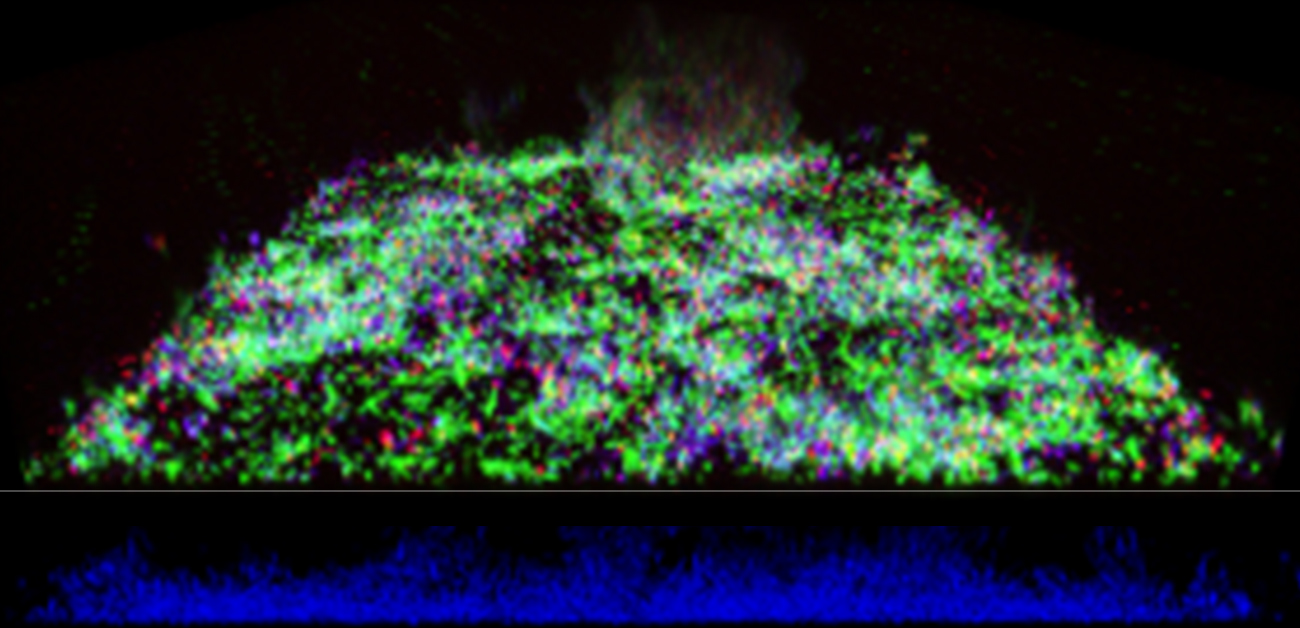
Microbial food chain: Nutritional interactions promoting periodontitis
Researchers led by Osaka University clarify the new role of oral microbe Fusobacterium nucleatum in the development of periodontitis
In ecology, a forest is a well-known example of a biome – an ecosystem of plants and animals that corresponds to a specific regional climate helping each other. But did you know that the human mouth has its own small-scale biome known as a microbiome? This oral “ecosystem” is composed of a diverse array of bacteria that reside in your mouth impacting oral health. Recently, researchers in Japan have shed new light on one key component of the oral microbiome, a microbe known as Fusobacterium nucleatum (F. nucleatum).
In a new study published in mSystems, researchers led by Osaka University have revealed the role of F. nucleatum in the development of periodontitis, also known as gum disease. Periodontitis is marked by inflammation of the gums and can lead to gum damage and tooth loss. One important microbe involved in periodontitis is a pathogen known as Porphyromonas gingivalis (P. gingivalis).
Within the oral microbiome, a process called metabolic cross-feeding occurs, wherein bacteria secrete products – often as nutritional wastes – that are consumed by other bacteria, thereby promoting the survival of those bacteria. The research group previously showed that F. nucleatum, a common component of the oral microbiome in both healthy and disease states, participates in a cross-feeding relationship with another oral bacteria. However, the mechanisms underlying the involvement of F. nucleatum in the progression of periodontitis had not yet been determined, prompting the research team to further examine the interactions of F. nucleatum and other oral bacteria.
“To better understand how the metabolic interactions of F. nucleatum may contribute to the development of gum disease, we analyzed co-cultures of F. nucleatum with other commensal bacteria found in the mouth,” says lead author Akito Sakanaka. Commensals are microbes (including bacteria) that reside on the surface of the body and within the oral cavity and digestive tract without causing harm.
The researchers found that co-culture of F. nucleatum with other commensal bacteria resulted in an increase in the availability of certain amino acids that F. nucleatum then used to produce polyamines such as putrescine and cadaverine.
“We found that F. nucleatum produces polyamines such as putrescine and cadaverine through metabolic cross-feeding with other commensal bacteria,” says corresponding author Masae Kuboniwa, DDS, PhD. “These polyamines then create favorable conditions that allow the periodontal pathogen P. gingivalis to grow and spread, thus promoting the development of periodontitis.”
Analysis of plaque samples from human subjects showed that the presence of P. gingivalis coincided with the presence of the genetic information required for the production of putrescine found within F. nucleatum and other commensal bacteria. These findings suggest that F. nucleatum integrates a metabolic network within the oral microbiome which may promote the development of periodontal disease.
“In other words, neglect of toothbrushing may provide ample cross-feeding opportunities where oral bacteria spontaneously start exchanging metabolites via F. nucleatum, ultimately leading to an increase in periodontal pathogens.” says senior author Atsuo Amano, DDS, PhD. “Considering that F. nucleatum is also strongly linked to serious systemic conditions such as colorectal cancer, more work is needed to focus the metabolic properties of F. nucleatum within polymicrobial communities, which might open new therapeutic opportunities for F. nucleatum-mediated diseases.”
It is not clear why polyamines induce drastic changes in behaviors of P. gingivalis. Far more work is needed to uncover the molecular mechanisms underlying the consequences of polyamines on the physiology of P. gingivalis.
Fig.1
Schematic of the F. nucleatum-integrated trophic network in oral biofilms revealed by this study.
Credit: 2022 Akito Sakanaka et al., Fusobacterium nucleatum metabolically integrates commensals and pathogens in oral biofilms, mSystems
The article, “Fusobacterium nucleatum Metabolically Integrates Commensals and Pathogens in Oral Biofilms,” was published in mSystems at DOI: https://doi.org/10.1128/msystems.00170-22.
